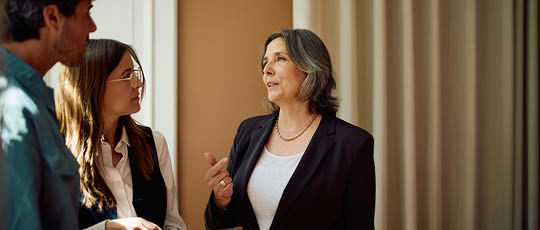The role of chief people officer (CPO) has changed forever — and it's more dynamic than ever.
The pandemic moved all of us to a virtual space, meaning you are no longer just an HR leader: you're a chief communications officer, a chief medical officer and chief compliance officer. You are whatever your people and your company need you to be. Your job now, more than ever, is to listen to the winds of change and pivot as needed.
This period has taught HR folks a lot, but in our line of work, in particular, we are seeing a swing back to the human piece of human resources. That means prioritizing the employee experience, the employee as a stakeholder, and the realization that your business won't thrive and profit without your people.
For many companies, the pandemic accelerated trends in the labor market. About a quarter of workers plan to look for a job at a different company once the pandemic has subsided. Of the workers who plan on leaving, 80% are concerned about their career growth.
Employees, both white-collar and blue-collar, have a degree of buying power and leverage that they didn't have before the pandemic. There are not enough workers for all of the open jobs, which gives workers more optionality. More than 4.5 million people voluntarily left their jobs in November 2021. With what feels like a finite number of employees, how do we get the productivity we want? Can it really be about ensuring our employees feel seen, heard and valued?
At Guild, I lead a dynamic and distributed team. My team is in service to our Guild colleagues, the company's mission, our business strategy, and, importantly, to the working adults we support. In my role, I'm leveraging more than 20 years of experience in HR across many different sectors — hospitality, sports, media, retail and fintech — to inform new and different ways of working and help employers unlock opportunities for their workforce.
We take the same approach with our own employees. We are all responsible for making sure we aren't relying on business systems and behaviors from another era. Today's CHRO needs to enable and empower all of our employees from all backgrounds at every level to succeed through creativity, curiosity and constant innovation. We do that by understanding, managing and developing the full person.
Here are three trends that I recommend CHROs stay ahead of to serve their teams in these rapidly changing times:
1. Diverse and inclusive benefits. Focus on the well-being of your employees and go beyond traditional benefits.
- Family Planning: Provide a benefit that helps working families better balance family, health and work. That includes providing support for inclusive paths to parenthood creates a more diverse and inclusive team.
- Daycare/Caregiving: It is important to create a culture where caregivers feel supported and have the resources needed to care for themselves and their families. Creating access to quality care providers, on-site childcare and caregiver leave are ways to honor and support the caregiving needs and challenges that many employees face.
- Mental Health: To serve the full person, mental health and emotional well-being needs to take priority. Providing different options like counseling, therapy, coaching and mood apps promotes emotional well-being.
Upskilling and professional development are meaningful ways to engage and retain talent. The process of upskilling employees to drive career mobility is a powerful retention incentive, while professional development programs create further incentives for employees to continue thriving at and creating value for your companies. Investing in education and skilling is a win-win that benefits both employees and the company's bottom line.
3. Reimagine the CPO role. Consider what the CPO’s role should be, what it currently is and the value it can create.
We need to think about the different layers of the CHRO role, including different ways of thinking for the function. One example: Should HR be separate from corporate social responsibility (CSR) of environmental, social and governance (ESG)?
To address your internal strategic needs, you must understand how they are intertwined with CSR and ESG. A command of new technology and a strategy for the digital workplace are essential. All of these topics converge into empathetic leadership that actually considers your employee an asset and a human being with needs, no different from your shareholders and customers.
Above all else, the most constant trend is change. The last two years taught us that the role of a CPO is dynamic and requires adaptability. We can anticipate some challenges, but we must be nimble and influential in order to address the new ones emerging.
It's our job to listen. Not only because workers have more leverage than ever before these days, but also because it's the right thing to do.
 1110x428.jpg)






